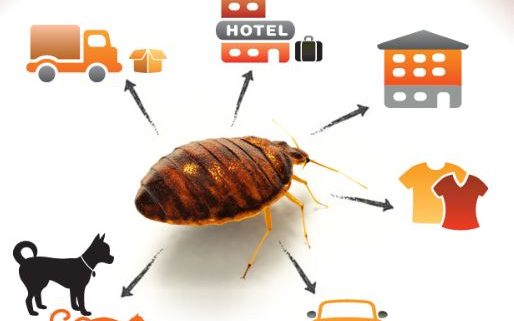Comprehensive Kings Bug Control Services Cincinnati OH
Comprehensive Kings Bug Control Services Cincinnati OH
Blog Article
Types of Bug Control: Which Technique Is Right for Your Infestation?
When faced with a bug infestation, the choice of an ideal approach for insect control is crucial in efficiently taking care of the situation. By checking out the numerous types of bug control approaches available, individuals can make enlightened choices tailored to their distinct scenarios, ensuring a more lasting and reliable end result in pest removal.
Chemical Bug Control
Chemical parasite control involves using artificial or normally acquired chemicals to take care of and eradicate pest populaces effectively. This method is typically used in farming, forestry, and property setups to battle a wide variety of insects, including weeds, rodents, and insects. The use of chemical pesticides can provide fast and targeted remedies to pest problems, making it a preferred selection for several people and organizations.
Among the vital benefits of chemical bug control is its capability to quickly get rid of pests, decreasing the risk of damage to plants, residential or commercial property, and human health and wellness. By using specific chemicals that target particular parasites, this approach can successfully manage problems while decreasing damage to helpful organisms and the environment when used correctly.
However, the usage of chemical parasite control likewise raises problems regarding prospective adverse impacts on non-target types, water sources, and human health. It is important to follow safety and security standards, apply chemicals sensibly, and think about alternative pest control approaches to reduce these threats and make sure sustainable insect administration techniques.
Biological Pest Control
Organic pest control, likewise recognized as biocontrol, uses living microorganisms to handle and reduce pest populaces naturally. This technique harnesses the power of nature to control parasites without the need for synthetic chemicals. Biocontrol can entail the introduction of all-natural adversaries of the insect varieties, such as pathogens, parasites, or killers, to subdue pest populations. By utilizing the parasite's natural predators or microorganisms, organic pest control offers a sustainable and ecologically pleasant remedy to pest monitoring.

Mechanical Bug Control
Utilizing physical and manual techniques to take care of bug populations, mechanical insect control supplies an alternative strategy that does not rely upon making use of living organisms or artificial chemicals. This method entails the use of obstacles, traps, or other tools to literally discourage or remove pests. By obstructing pest entrance points or establishing catches to capture them, mechanical insect control can properly decrease invasions without introducing chemicals right into the setting.
One common instance of mechanical parasite control is the use of mesh screens on doors and windows to avoid insects from going into structures. This simple yet efficient technique acts as a physical barrier, keeping bugs out while allowing for proper ventilation. In addition, devices like mousetraps, fly swatters, and ultrasonic repellents fall under the mechanical bug control group.
While mechanical parasite control termiticide treatment methods can be labor-intensive and need routine surveillance and maintenance, they provide a sustainable and eco-friendly remedy for handling parasite problems. By combining different mechanical methods, homeowner can produce a detailed bug control approach that minimizes reliance on chemical pesticides.
Physical Insect Control

Some typical physical pest control methods include making use of barriers such as displays or nets to avoid bug entry, traps to record and remove parasites, and hand-picking to physically get rid of parasites from plants or structures. Furthermore, techniques like warm therapies can be utilized to regulate insects like bed pests by raising the temperature to degrees that are dangerous to the insects.
Physical bug control is especially valuable in incorporated insect administration (IPM) strategies, where several insect control approaches are combined for efficient parasite management while reducing making use of chemicals. By making use of physical bug control techniques, individuals can successfully resolve pest invasions with very little ecological effect.
Integrated Insect Management
When carrying out physical pest control techniques as component of bug management techniques, Integrated Insect Administration (IPM) arises as a thorough approach that leverages numerous techniques to effectively control pest populations. IPM concentrates on long-term prevention of pests via a mix of organic, social, physical, and chemical devices customized to certain bug problems. By integrating multiple more tips here control strategies, IPM aims to minimize the risks linked with parasites while likewise lowering dependence on chemical options.
One secret element of IPM is the emphasis on surveillance and analyzing pest populaces to establish one of the most proper control methods. This positive method permits very early treatment and targeted methods, causing much more efficient parasite administration. Furthermore, IPM advertises eco pleasant practices by focusing on non-chemical control techniques and only making use of chemicals as a last resource.
Conclusion

By utilizing the parasite's natural killers or microorganisms, biological insect control uses a sustainable and environmentally friendly remedy to pest monitoring. - Kings Bed bug exterminator Cincinnati
Utilizing manual and physical approaches to handle insect populations, mechanical parasite control uses an alternate approach that does not depend on the usage of living organisms or synthetic chemicals.A reliable method to managing parasite populaces without counting on chemical or organic techniques involves the usage of physical insect control strategies.When applying physical insect control techniques as part of parasite administration strategies, Integrated Bug Management (IPM) arises as a detailed method that leverages different techniques to successfully control pest populaces. Chemical pest control includes the use of pesticides, organic pest control utilizes all-natural killers, mechanical insect control entails physical barriers, physical bug control consists of capturing or removing bugs, and integrated insect monitoring combines several approaches for an all natural technique to pest control.
Report this page